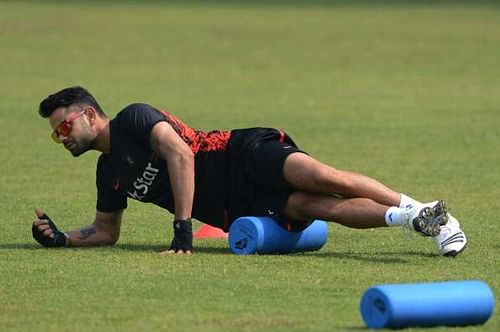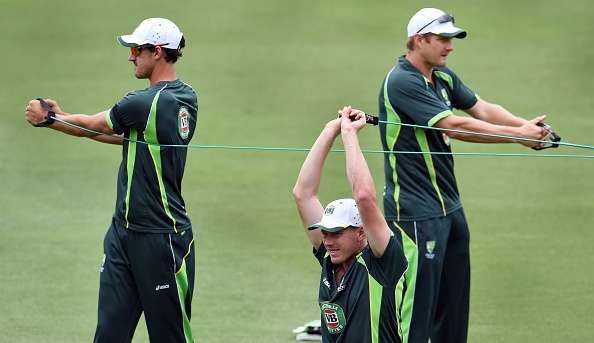
Has fitness become as important as talent in cricket?
Gone are the days when the game of cricket was more of a languid state of affairs with slow, monotonous overs being bowled throughout the day. Thrust into the modern world of swift pace, the game has changed colours and become a sleek version of itself.
In the modern avatar, there is very little room for error, and the fractions have become smaller and finer. To perform well and get the extra edge, players have realised the importance of being fit and not being let down by their body.
Earlier, exercise was restricted to a pre-game warm up and a couple of laps round the ground. Players like Kapil Dev and Sunil Gavaskar, who hardly got injured despite playing long careers, satiated the need for staying fit just by the brief warm-ups. Having a shredded physique was never a requirement in cricket, stamina was the major aspect everyone worked on. Playing long sessions up to five days at a stretch required more of endurance than a bulky, muscular body.
However, today’s set of players are hardly the dawdling lads that had graced the game before.
Virat Kohli, Team India’s poster boy, who has evolved from a chubby teenager to a powerful and muscular man in his mid-twenties is someone who works a lot on his fitness, which is quite evident from his physical transformation over the years. He follows the Explosive Power workout, a regimen known to be common among footballers, which gives short bursts of explosive energy. He has taken the culture of gymming and workouts seriously, yet he doesn’t stop at the conventional weights and machines. He has added a lot of innovative technologies too, starting with a specialised high-altitude mask, and has now gone to the Techno-shape. All these contraptions help him maintain the zeal throughout big, high-intensity games. The amount of running that he does between the wickets, and the remarkable athleticism shown by him is phenomenal. MS Dhoni, India’s skipper in the limited overs, uses a Fitbit watch on his left hand, which helps the support staff monitor his physical activities.
And, it is not just about the workout. More than that, diet becomes a major factor, especially when travelling overseas.You get training centres everywhere, but how do you maintain the same kind of customised cuisine over continents?
The English team came up with a remarkable food menu for their cricketers before the Ashes 2013-14, which was controversially leaked to the public. The dossier lists down as many as 194 dishes that were made available to Alastair Cook and his team, and was supervised by English Nutritionist Chris Rosimus. A lengthy menu, which contains a lot of super-foods and high-quality ingredients, goes to show how the dietary patterns of the players have evolved. With a high quality support staff in place, players get customised dietary plans based on their physique and workload. A fast bowler like Dale Steyn, who until recently, was playing all three formats, requires high protein and fibre in his diet. Rohit Sharma, in order to lose weight, used to survive on boiled eggs when he was out of favour from the national side.
One of the first instances of high fitness standards in international cricket was the introduction of the Boot Camp for the Australian national side prior to the 2006 Ashes by coach John Buchanan. The team was exposed to a strict physical routine of military-style exercises that included carrying 35 kg worth of water cans and pushing vans through muddy terrains. Similarly, England‘s 2010 pre-Ashes camp was held in Germany, where the English players visited a concentration camp, and also went hiking and boxing. It isn’t surprising that both of these unique preparations were followed by Ashes victories.
There was a time when Shane Warne allegedly played a whole Ashes on a diet of Pizza!
Shane Watson is another cricketer who has managed to transform himself from someone with a fragile body to one of the fittest cricketers around, playing international cricket into his mid-30s despite being plagued with a number of injuries early on. Cricketers generally go for high-carbohydrate diets that help them maintain their energy levels to sustain long playing periods. Watson went for a low carb diet and changed from weights to pilates in training that helped him lose weight and remain energetic. He gives a lot of importance to yoga and meditation and inculcates fasting in his regimen too, following a 5:2 formula where he would fast for two days in a week.
Players like Rohit Sharma and Virat Kohli were no doubt talented when they started off their respective international careers, but their physical transformations have helped unlock a different dimension to their game, and the results are there for everyone to see. At the international level, when the cream of the top players is selected to play for their respective national sides, the differentiating factor sometimes becomes fitness. The importance is further enhanced due to the rise in fielding standards, where each player is invariably expected to jump, dive and run to save boundaries and take catches.
Along with the skill set and training methods, today's cricketers also possess a different mindset through which they approach the game. To stay par with the super-fit athletes that play the game today, fitness is slowly becoming as important as talent.

